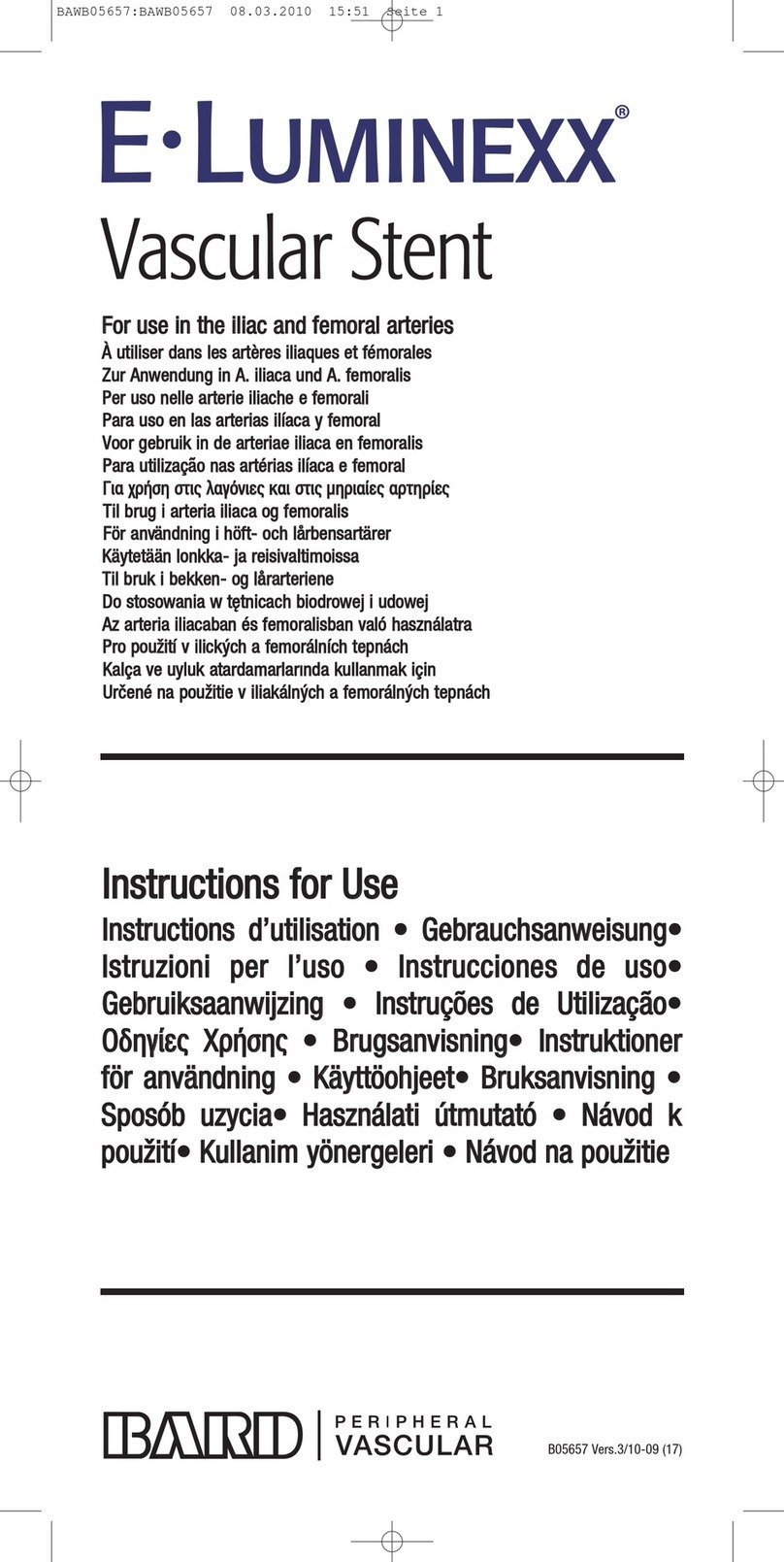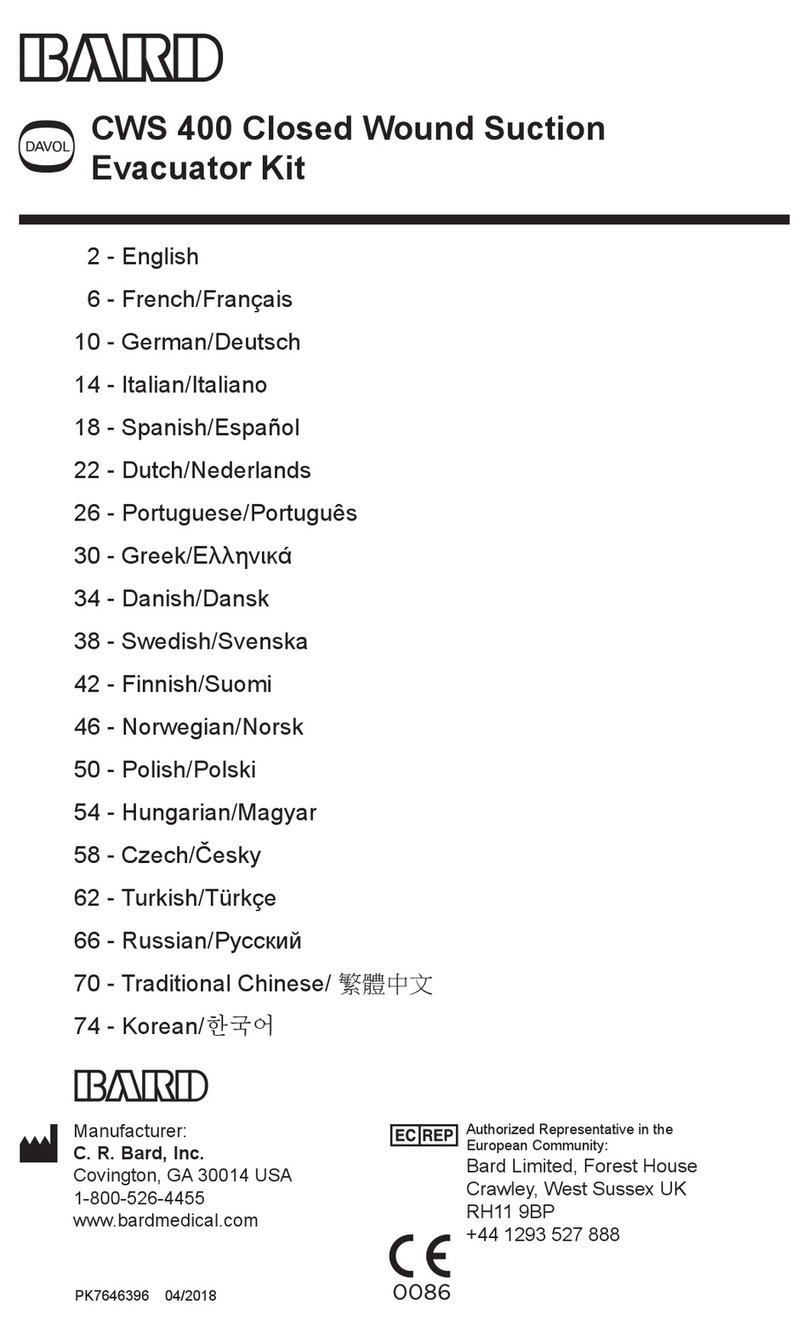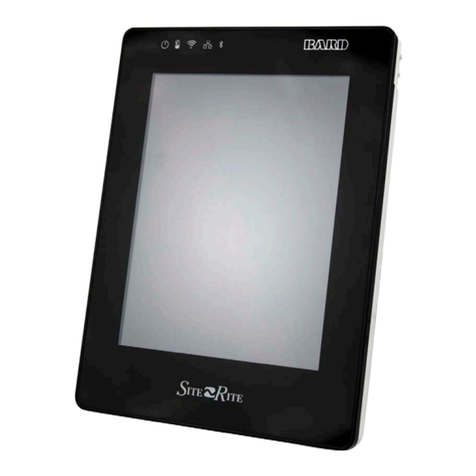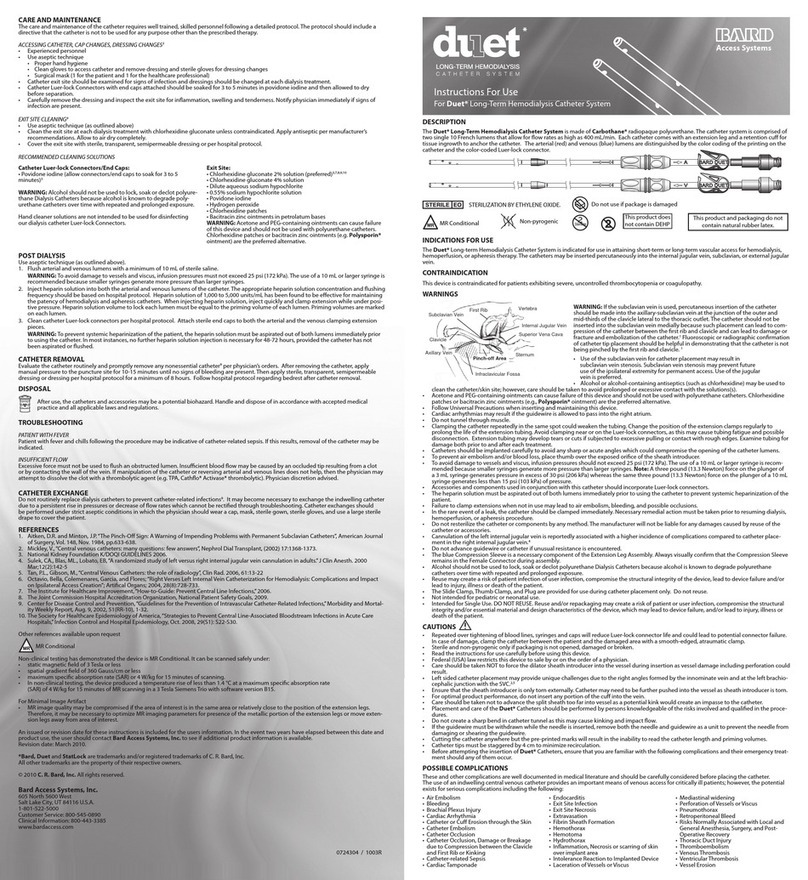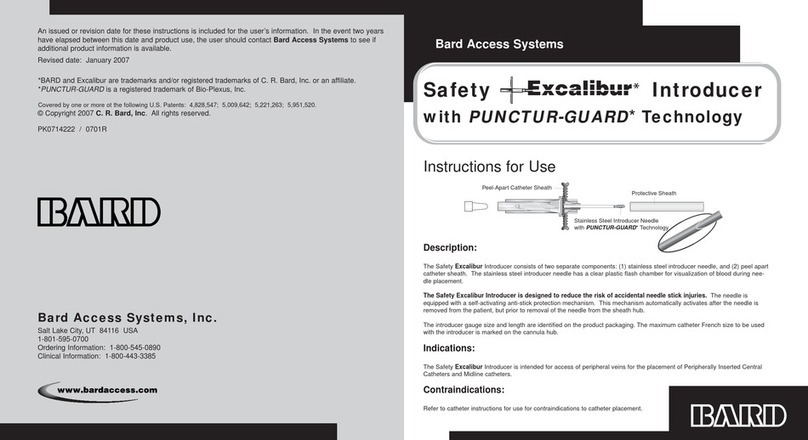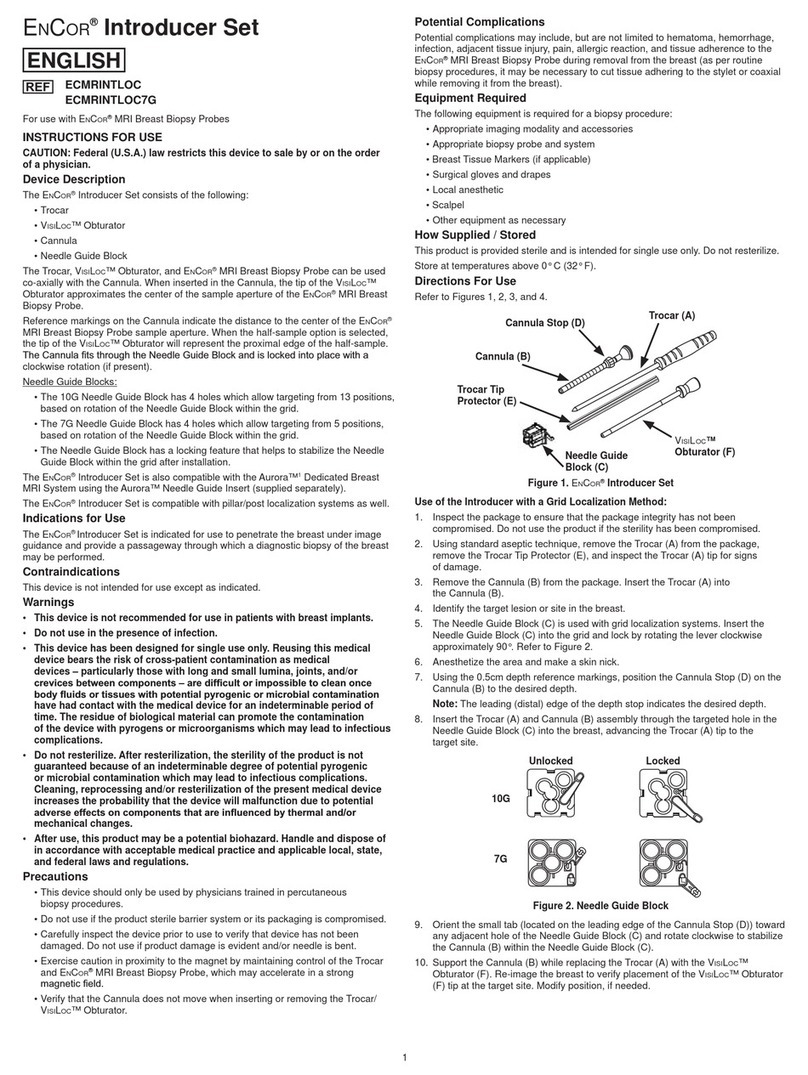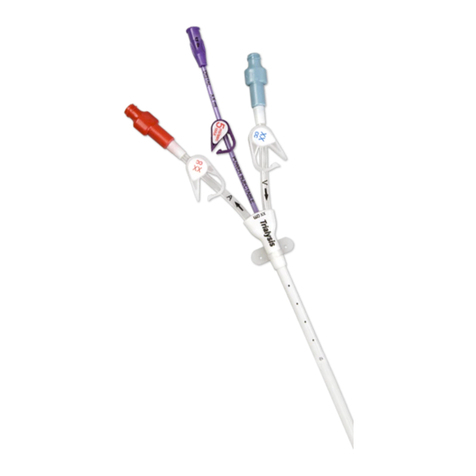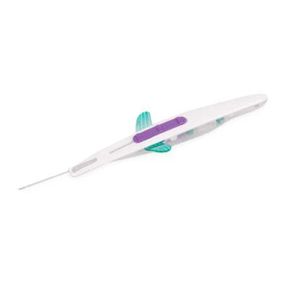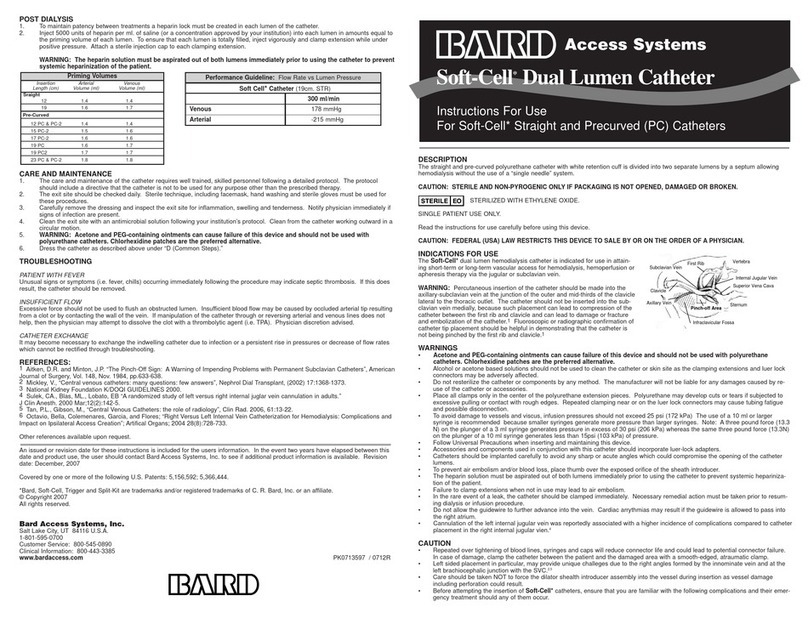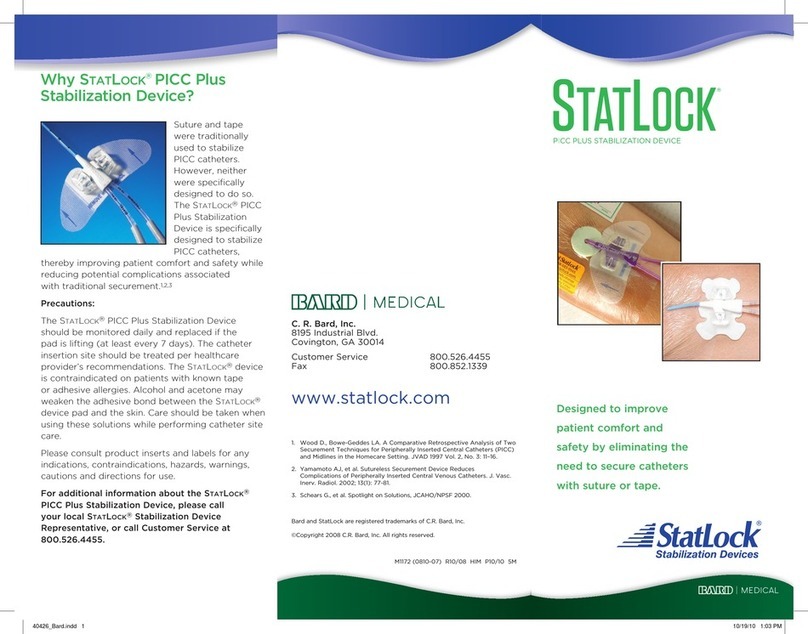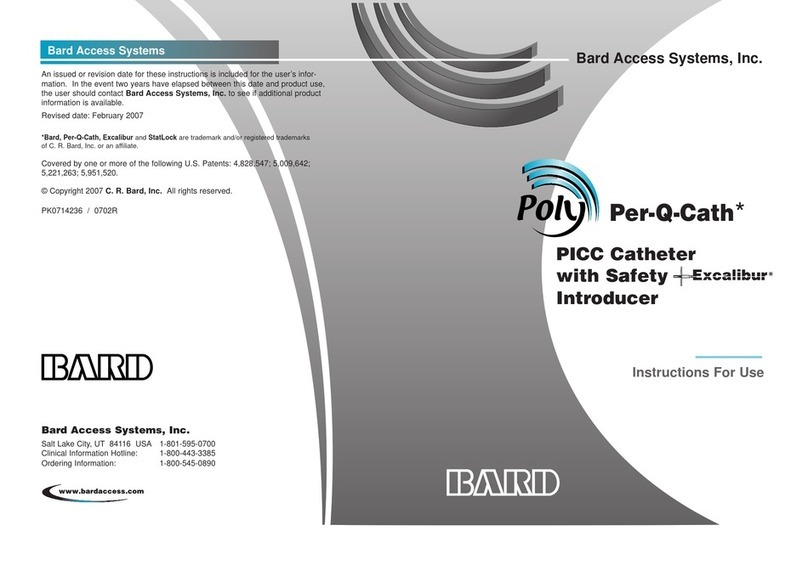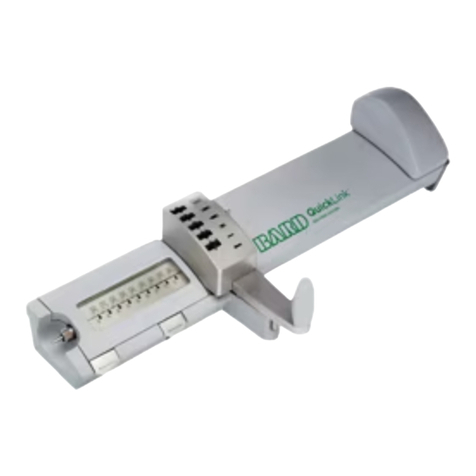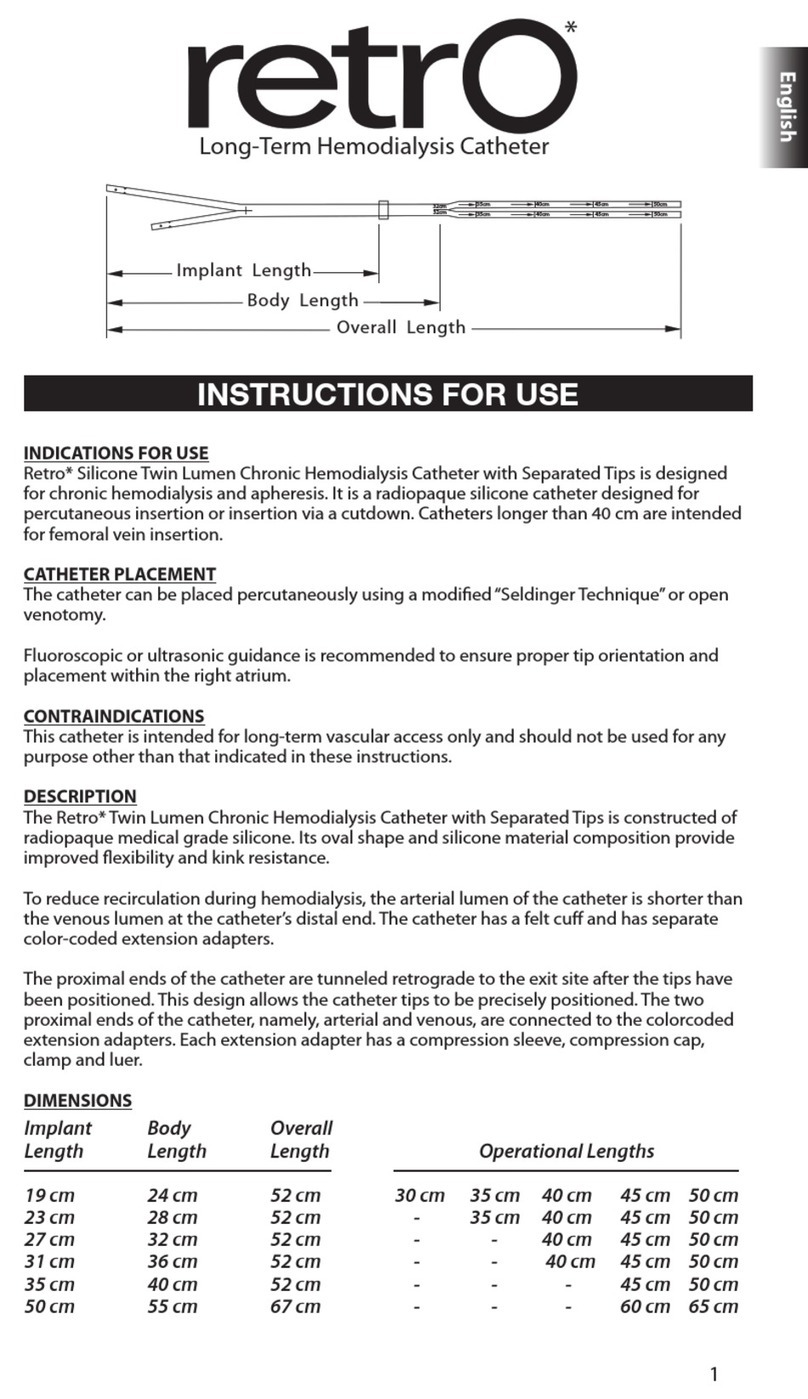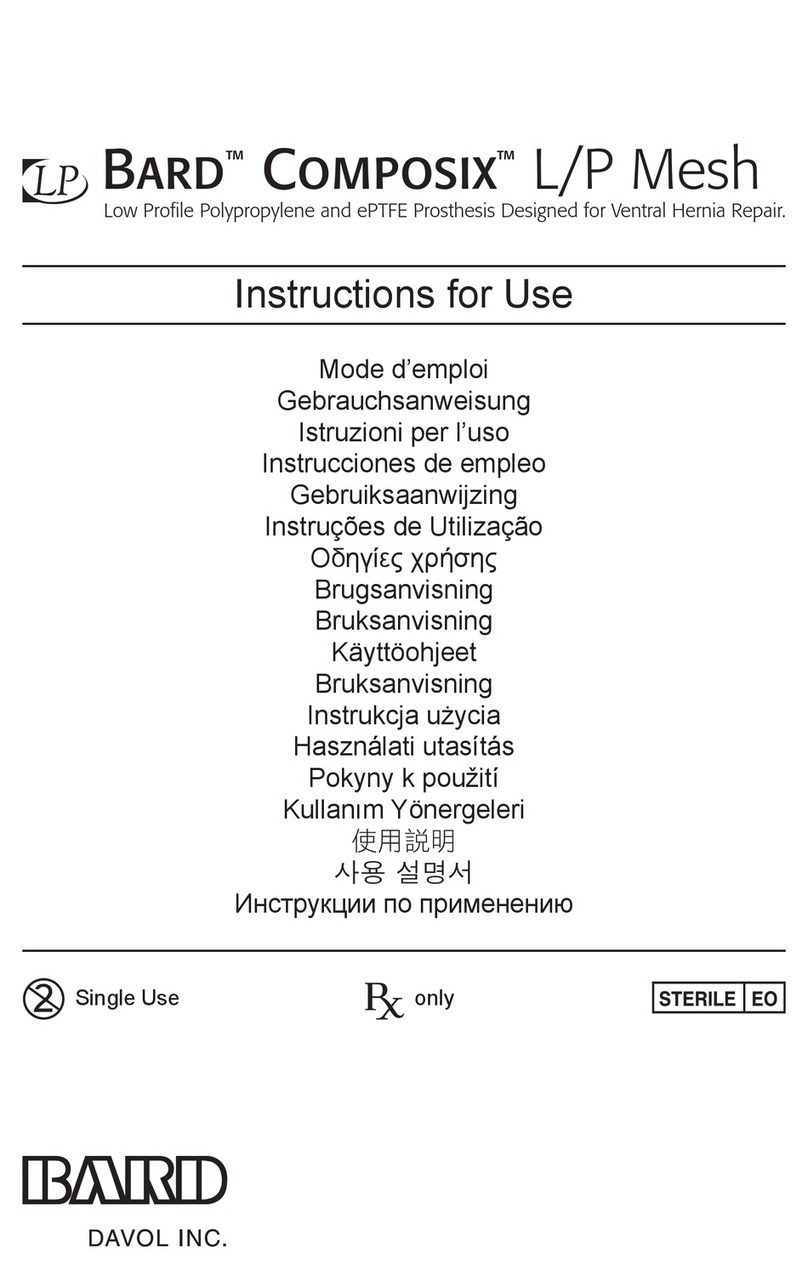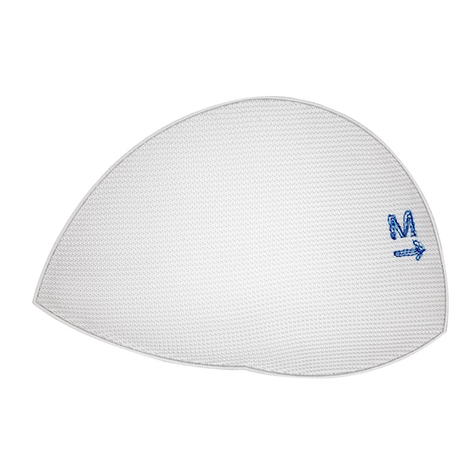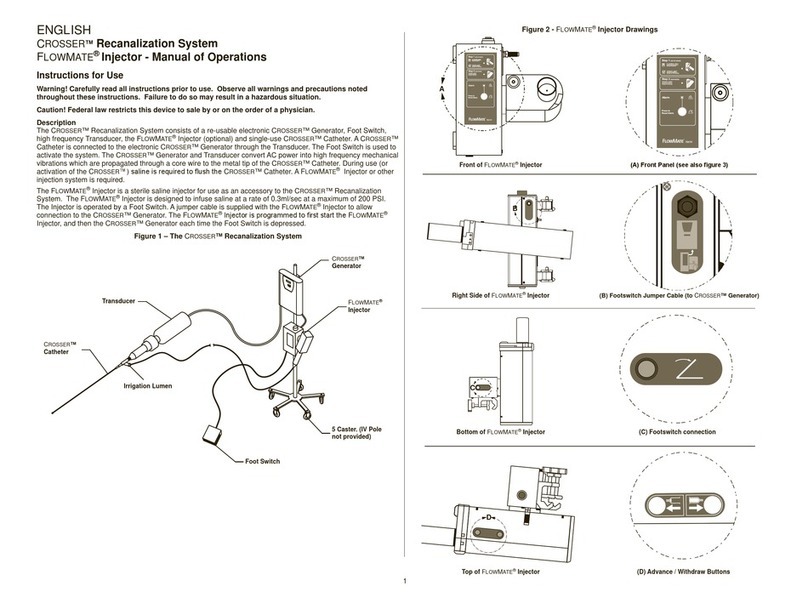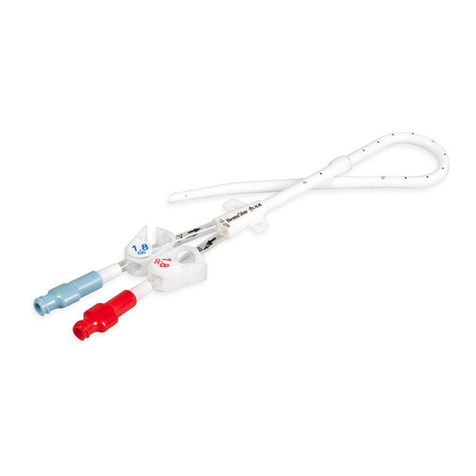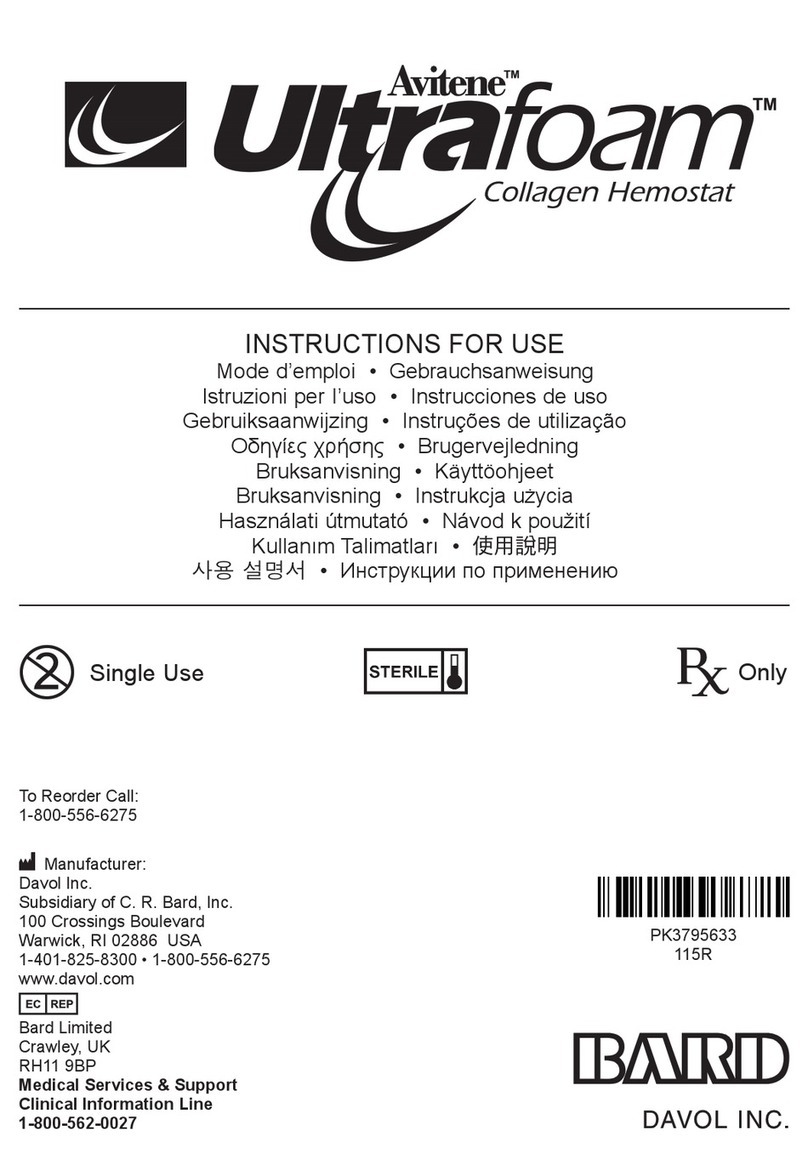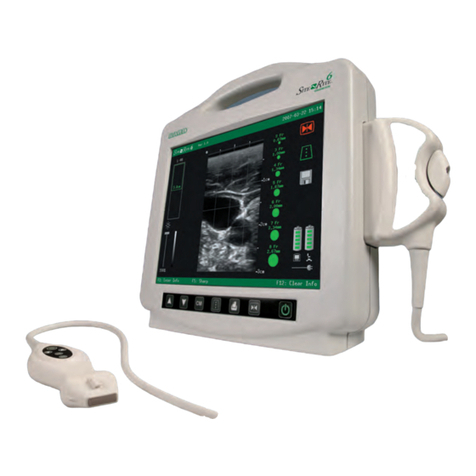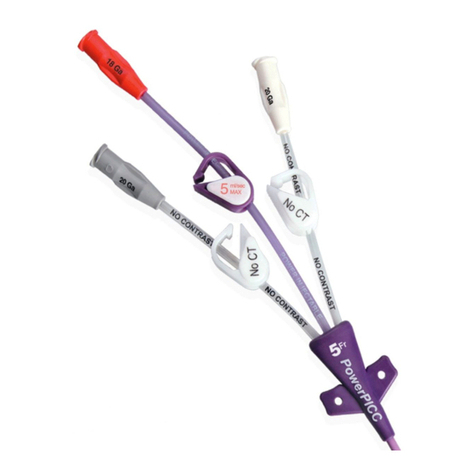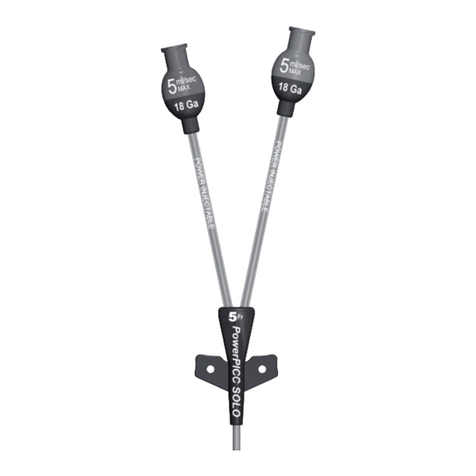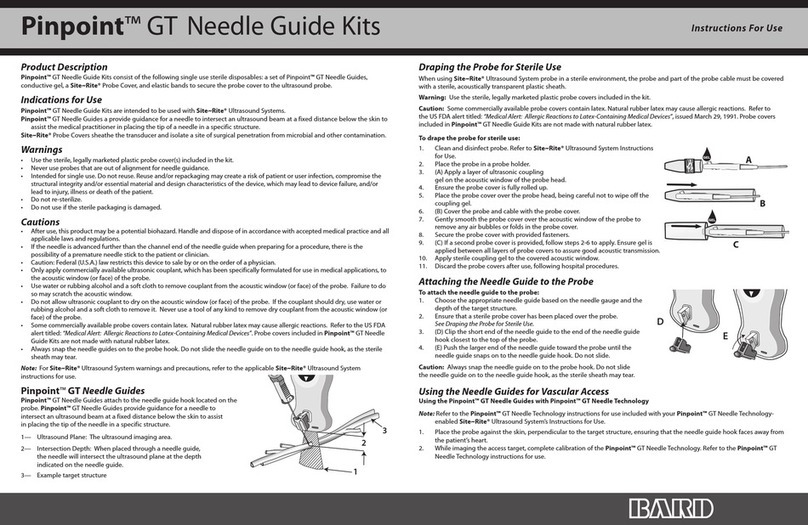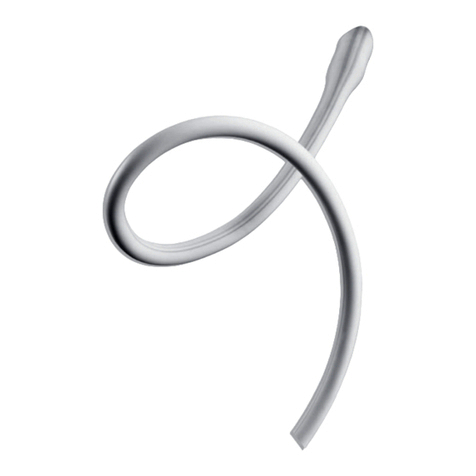
6
Sherlock 3CG™Tip Confirmation System
English
Warning: If the Site~Rite® 8 Ultrasound System with Sherlock 3CG™ TCS is visibly damaged, discontinue use immediately. Use of the damaged
system may result in injury or equipment damage.
Warning: Do not submerge the sensor in liquid or allow fluid to enter the connectors. Damage to the equipment may occur.
Warning: Sherlock 3CG™ TCS is not intended to diagnose or treat disease.
Warning: Only Bard Access Systems’ authorized service personnel should attempt to service this equipment. Site~Rite® 8 Ultrasound System
contains static sensitive components and circuits. Failure to observe proper static control procedures may result in damage to the
system.
Warning: Do not rely on ECG signal detection for catheter tip positioning when interpretation of the external or intravascular ECG P-wave is
difficult.
For example, when:
- P-wave is not present
- P-wave is not identifiable
- P-wave is intermittent
These conditions may be a result of heart rhythm abnormalities, atrial fibrillation, atrial flutter, severe tachycardia or presence of
cardiac rhythm devices. In these cases, rely on magnetic navigation and external measurement for tip positioning and use chest x-ray
or fluoroscopy to confirm catheter tip location, as indicated by institutional guidelines and clinical judgment.
Warning: Do not rely on ECG signal detection for catheter tip positioning when there are no observable changes in the intravascular P-wave.
In this case, rely on magnetic navigation and external measurement for tip positioning and use chest X-ray or fluoroscopy to confirm
catheter tip location, as indicated by institutional guidelines and clinical judgment.
Warning: Do not place and/or use the Sherlock 3CG™ TCS in the presence of strong magnetic fields such as Magnetic Resonance Imaging
(MRI) devices. The high magnetic fields created by an MRI device will attract the equipment with a force sufficient to cause death or
serious injury to persons between the equipment and the MRI device. This magnetic attraction may also damage the equipment. The
magnetic and the RF fields associated with the MRI environment may interfere with the display of ECG waveforms. Consult the MRI
manufacturer for more information.
Warning: Do not remove Sherlock 3CG™ TCS enclosures. To avoid electrical shock, use only the power cord supplied with the system and
connect only to properly grounded wall outlets. Only Bard Access Systems qualified personnel should service the system
Warning: Ensure all connecting cables and connections are electrically insulated and do not come into contact with other electrical cables or
metal surfaces.
Warning: Ensure that the patient does not directly or indirectly contact non-insulated metal surfaces.
Warning: Place skin electrodes carefully at locations indicated in these Instructions for Use and ensure good skin-electrode contact. Failure to
do so may cause unstable ECG waveforms and/or ECG waveforms that are not described in these Instructions for Use. In such a case,
rely on magnetic navigation and external measurement for tip positioning and use chest X-ray or fluoroscopy to confirm catheter tip
location, as indicated by the institutional guidelines and clinical judgment.
Precautions
Caution: Federal (U.S.A) law restricts this device to sale by or on the order of a physician.
Caution: Do not pull the cables to disconnect from the system. Pulling the cable may damage the cable or cable connection.
Caution: Excessive twisting or bending of the sensor cable may cause system failure.
Caution: Use only Bard Access Systems’ cleaning and disinfection procedures. Failure to do so may damage the device.
Caution: Do not use excessive force when connecting or disconnecting the Fin Assembly to or from the sensor or equipment damage may
occur.
Caution: When the sensor is not in use, store in the holster, roll stand basket or other secure location to avoid damage.
Caution: Do not allow any ferromagnetic objects, e.g., wired undergarments, metal instruments, watches, jewelry, electronics, metal bedrails,
etc. to be within 12 in (30 cm) of the sensor once the calibration process is complete. These items may interfere with the sensor's
ability to accurately locate the Sherlock™Stylet tip.
Caution: Equipment operating in close proximity may emit strong electromagnetic or radio frequency interference which could affect the
performance of this device. Avoid operating the device near pumps, cauterizers, diathermy equipment, cellular phones, or other
portable and mobile radio frequency communications equipment. Maintain equipment separation of at least 5 ft (1.5 m).
Caution: Electrodes should be applied only to intact, clean skin (e.g., not over open wounds, lesions, infected or inflamed areas).
Caution: Placement of red electrode outside of the correct region may result in reduced ECG performance. See Section 4.
Caution: Discontinue electrode use immediately, if skin irritation occurs.
